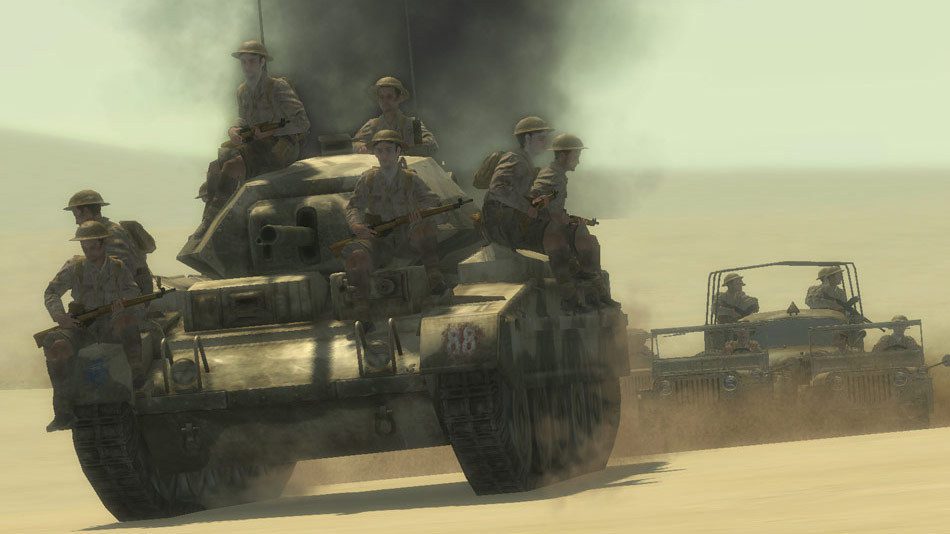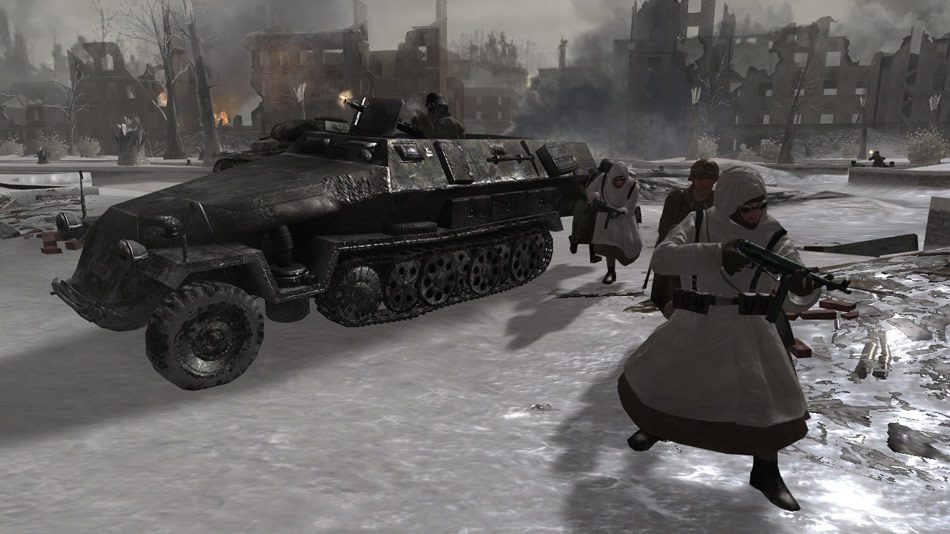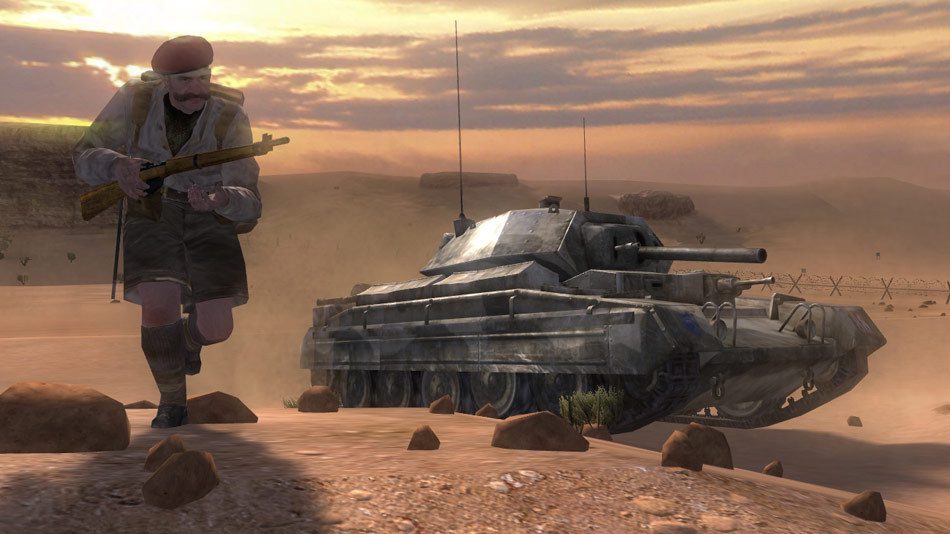Key Highlights
- Introduces tactical smoke grenades that enhance gameplay but fail to mask repetitive mechanics.
- Immersive campaigns span Soviet, British, and American missions, though they lack narrative depth.
- Historical accuracy is commendable yet undermined by predictable WWII tropes.
- Multiplayer mode reduces player count compared to its predecessors, stifling potential.
- Missing popular features from United Offensive, such as sprinting and cooking grenades.
- Technological advancements offer stunning graphics, overshadowed by an uninspired health system akin to Halo.
Introduction
Call of Duty 2, made by Infinity Ward, was an important launch title that helped the Call of Duty series grow into console gaming at the start of the Xbox 360 era. Released in 2005, it aimed to make the series better and offer the best gameplay while still being a WWII shooter. Even though it had great graphics and smooth mechanics, many players found the game felt linear and similar to others. This led to some people feeling let down because of its repeating stories and lack of new ideas.

The Evolution of Call of Duty 2
The creation of this title shows a big effort to change the first-person shooter genre. But even with the good reviews it gets, many parts feel old and reused. The different individual campaigns, particularly the disappointing Soviet campaign, often lack the depth needed for real immersion. While other games in the series, like Modern Warfare and Black Ops, took chances, this one seems comfortable with what it has. It gives us another version of World War II, but it doesn’t really bring anything new to the gameplay.
Key improvements from the original game
Building on the first Call of Duty, the transition aimed to keep the excitement of intense battles. It also tried to add some small upgrades, but these changes didn’t impress much. The removal of health packs did bring some tension, but the simple “hide and heal” system made the game less realistic and more about convenience. This meant that gameplay felt a bit weak.
The multiplayer aspect started off well, but it didn’t match the depth of United Offensive. The limit of just eight players on Xbox Live felt old-fashioned when the game launched, making many matches less exciting. The new “Headquarters” mode offered a small bright spot but didn’t save the multiplayer from its lack of creativity.
Other updates included better squad chatter and slight changes to AI, which tried to make the game feel more real. Still, enemy behavior felt robotic and didn’t give players a good challenge as they moved smoothly through checkpoints. Fans who hoped for a big improvement found the sequel a mild disappointment, hidden under flashy visuals.

Technological advancements in gameplay
Infinity Ward promoted new technology in Call of Duty 2. They used the power of Xbox Series X and improved connections with Xbox Live. The game looked great with better smoke effects and larger game areas. However, it often felt more like a pretty cover for an average game.
The new checkpoint system made playing easier, but it took away some of the tension. This change reduced the excitement that comes from winning a tough battle. It was a quick solution to help new players, but it also lessened the sense of being deeply involved in the game, unlike in modern games like Modern Warfare.
While not having quick save options made players change their strategies, updates mainly focused on how the game looked. The graphics could only cover up the simple game mechanics that didn’t improve much. They seemed flat compared to games like Black Ops, which would later set new standards. True innovation was missing from the game.

Immersive Campaigns and Historical Accuracy
The single-player campaigns told large stories from the Soviet, British, and American viewpoints. They included famous battles like the Second Battle of El Alamein and operations in Normandy. However, they often lacked emotional depth. The missions were repetitive, and the storylines were not very well developed.
While there were attempts to make the history accurate, most of it was already known from other games. The Soviet campaign had some special moments, like sniping through old pipes. Still, many missions felt normal and used common WWII elements that did not feel fresh or new.
Overview of the main campaigns
The Soviet campaign put players right in the chaos of Moscow and Stalingrad. However, it relied too much on predictable stealth gameplay. Crawling through pipes and following set patterns often took away the freedom to complete tasks. Although the graphics were nice, the gameplay provided little excitement due to dull design.
Similarly, the story of the British soldier took players to battles in North Africa. However, the missions felt more like tests of patience than challenges of skill. Driving tanks or climbing through destroyed areas in France did not hide the lack of player choices or strategy.
In the American missions in Normandy, especially during the assault of Pointe du Hoc, players enjoyed thrilling moments while climbing cliffs under fire. Sadly, this excitement was short-lived due to repetitive machine-gun nests and linear tasks that left players wanting a better story, especially beyond the drama of the first level.

Fact vs. fiction: How true is CoD 2 to history?
Call of Duty 2 was great at capturing the feeling of World War II but had some trouble with keeping things true to history. Some moments, like destroying important German cannons, felt real. But, big hero actions, similar to Band of Brothers, made it less realistic. Many missions focused on heroic victories instead of showing the true nature of war.
For example, the Normandy missions took players right into enemy areas. Still, a lot of it was fictional and didn’t match what really happened. Climbing the cliffs of Pointe du Hoc was exciting but made it seem simpler than it really was, missing important challenges for quick and easy gameplay.
People enjoyed little extras, like military channel introductions, because they added to the story. However, the creators traded off some accurate details for dramatic scenes that focused more on excitement than real authenticity. Fans of WWII might like the details but others might feel the game went too far into made-up stories.

Conclusion
In conclusion, “Call of Duty 2” was once seen as a big deal in first-person shooters. However, today it feels more like an old game that is left behind with all the changes in gaming. The fond memories of its exciting campaigns and detailed history can’t hide the fact that many of its game features seem old-fashioned now. Players who want to enjoy its famous moments may struggle with the limits of its technology and gameplay. As we think about its influence, we should ask if this classic can compete with the new and better games we have today. So, does the charm of “Call of Duty 2” still connect with players, or has it become just a small piece of gaming history?
Frequently Asked Questions
What makes Call of Duty 2 stand out from other FPS games?
Call of Duty 2 stands out in the Call of Duty series because it focuses on individual campaigns during WWII. But, its multiplayer servers are basic. Although the machine gun mechanics and squad AI are good, players typically enjoy more creative features in newer games like Modern Warfare.
Can you play Call of Duty 2 on modern gaming systems?
Yes, Call of Duty 2 is still playable on systems like Xbox Series X thanks to backward compatibility. Players can also find versions for Mac OS X. However, newer games like Modern Warfare have more features and updated gameplay that stand out.
Are there any hidden features in Call of Duty 2?
Hidden features are few, apart from some small easter eggs. Fans may like finding bonuses connected to multiplayer modes, but secret levels or references to characters like Sergeant John Davis do not provide major surprises compared to other first-person shooter games.
What are some Tips for mastering multiplayer mode?
Mastering multiplayer mode requires good team planning. Players need to protect each other by covering weak spots. They should also use cover fire and manage machine gun nests well. Trying out different multiplayer servers can help optimize tactics. This creates chances to win matches, even when there are limits on how many players can join.
How has Call of Duty 2 influenced modern shooter games?
Its impact on modern shooter games comes from mechanics like the “hide and heal” system. This system laid the groundwork for games like Black Ops. But, other gameplay features—like smoke grenades—did not change much. They left its legacy less visible, as newer ideas in Modern Warfare took the spotlight.
Call of Duty 2 reminds us that classic games can also come with high hopes. It is praised for its cinematic style. However, its lack of growth gave many players mixed feelings about playing this once-great game again.
